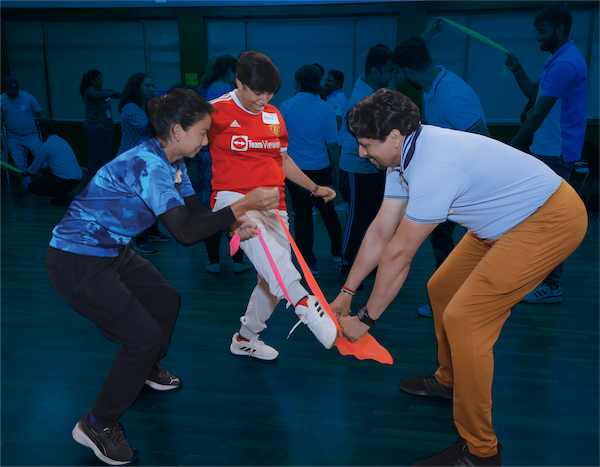August 10, 2018
Get a FREE printed Ray and the Sunbeatables® toolkit for your school or child care site, while supplies last! Sign up here: https://sunbeatables.org/

Patricia Wahl’s daughter attends the Eliza Corwin Frost preschool in Bronxville, New York. Patricia’s family, like so many American families, was impacted by skin cancer, the most common type of cancer in the United States. In fact, according to The American Academy of Dermatology, one in five people will develop skin cancer in their lifetime.
Patricia decided to take a proactive step toward skin cancer prevention by introducing her daughter’s class to Ray and the Sunbeatables®: A Sun Safety Curriculum, created and developed by The University of Texas MD Anderson Cancer Center.
“If one other family does not have to go through what we went through, then that is a success,” Patricia explained.
Skin cancer can be prevented. If kids can learn to practice sun safety at an early age, they will be more likely to carry those behaviors through the rest of their lives.
“As a parent at Eliza Frost, I have overheard moms on the playground that seemed to have some misconceptions about the sun,” said Patricia. “Since young children are introduced to the concepts of caring for their bodies through healthy eating and exercise, educating them about sun safety made sense to me.”
Patricia decided to approach Victoria McLaughlin, the director at Eliza Corwin Frost, about incorporating the Sunbeatables® Program into classroom time.
“She was very enthusiastic about the idea and supported it wholeheartedly,” said Patricia.

Teachers at the school got onboard with the idea of teaching sun safety as well.
“I loved that the Sunbeatables Program had a few different aspects: circle time discussion, science experiments, and crafts,” said Jennifer Read, a parent and teacher at the center.
“In my practice the children do many things science-related; I loved that they got to see the effects of the sun through an experiment,” Ms. Read continued.
Ms. Read’s class conducted an experiment where students put cutouts of the Sunbeatables superhero characters on pieces of dark construction paper, and then placed them in the sun. Over the course of a week, the students observed how the parts of the paper that were exposed to the sun gradually faded, while the areas of the paper covered by the superhero cutouts were “protected” from the sun and did not fade.

Step 2: The cutout is set on a dark construction paper, which is then placed in the sun.
Step 3: Over a week, students observe how the color fades in areas exposed to direct sunlight
“It was a cause and effect that they could understand in a fun way,” explained Ms. Read.
Added center director Ms. McLaughlin, “The Sunbeatables superheroes were a big hit as well.” “I want to continue to use Sunbeatables and will every year,” she went on. “The program was excellent, informative, and very appropriate for our preschool. I wish I knew about this program earlier.”
By introducing and encouraging healthy sun safety behaviors at a young age—such as wearing protective clothing, hats, and sunglasses applying SPF 30 broad-spectrum sunscreen and finding shade—teachers and parents together can have a long-term, positive impact on their kids’ health.
The entire Sunbeatables Program is available for free on sunbeatables.org. For more information about the program, please email [email protected].

